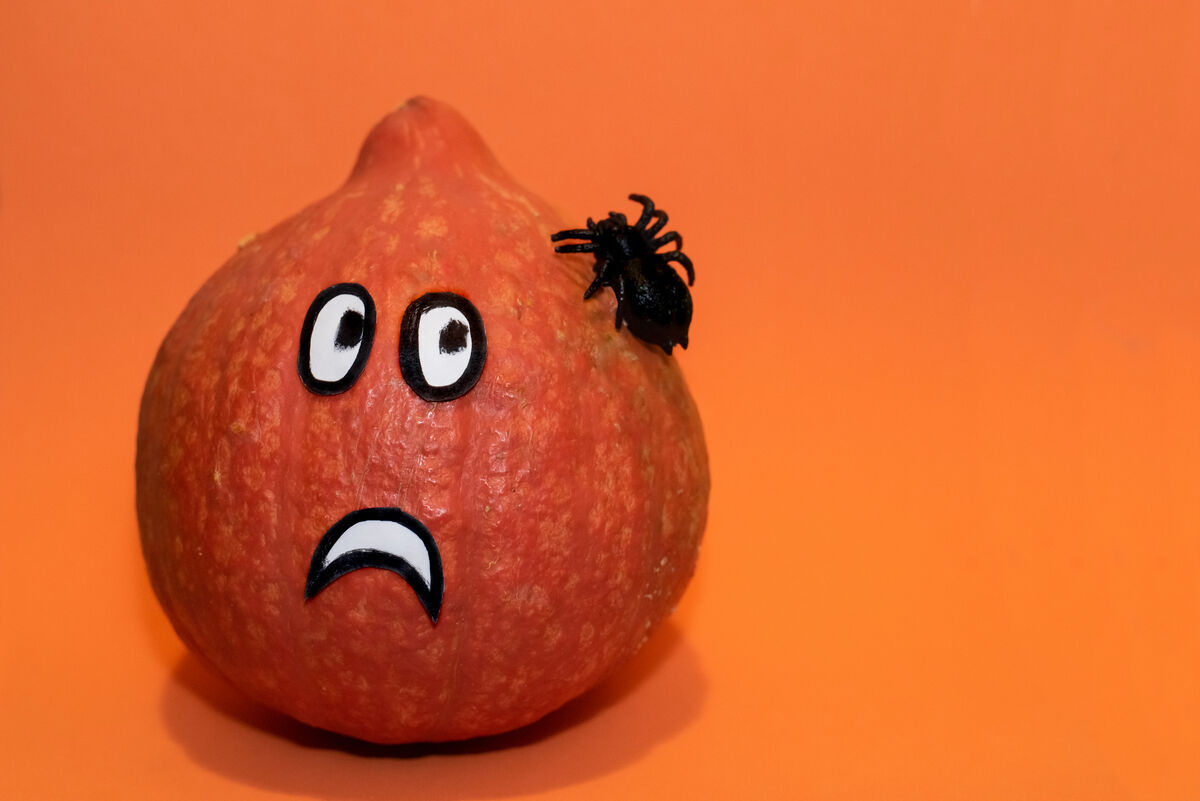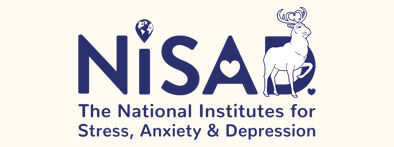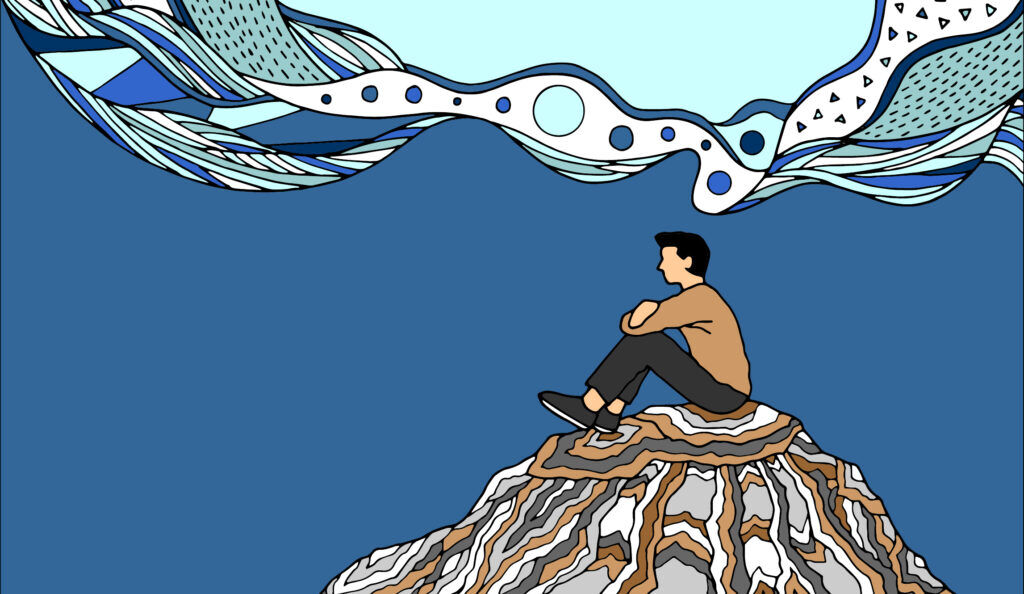Performance anxiety, fear of public-speaking or good, old stage fright?
Fear of flying or being a nervous flyer? Social phobia or social anxiety? There are various ways we tend to describe the things that make us anxious, worry us or scare us. The terms fear and anxiety seem to be used interchangeably. Perhaps you’ve wondered if they mean the same thing, or if there is actually any difference between fear and anxiety. In this post, we’ll be looking at what might be the difference between the various terminology, and whether knowing the difference matters.
What might be the difference between fear and anxiety?
I think it’s important to come right out and say it: what you are about to read is not necessarily true. We humans like to categorise, to attach labels, to put things in neat little boxes, in order to make sense of things. By contrast, the way our brains work, and the way language to describe our feelings and emotions has evolved, both contain linkages and overlaps that don’t always fit neatly with our rational-thinking desire for clear categorisations. Moreover, science does not furnish us with the ‘truth’; it is an ever-evolving search for information, which can provide us with useful models of understanding. These models are open to change and interpretation. That said, let’s look at a possible model of understanding.
Can you smell the fear?
The Cambridge Dictionary describes fear as:
An unpleasant emotion or thought that you have when you are frightened or worried by something dangerous, painful, or bad that is happening or might happen.
It then lists a few expressions in common usage:
Be in fear of your life.
Be no fear of something:
(e.g. There’s no fear I’ll be late as I’m setting three alarm clocks!
For fear that/of something:
(e.g. I’ll take an umbrella for fear that it might rain heavily and I’ll get soaked.
I rehearsed my lines over and over for fear of forgetting them).
Thus, fear arises when we are worried or frightened that something unpleasant is going to happen. It could even be said that if we are in the midst of an unpleasant experience, the fear we are feeling is about what might happen in the next moment. Ultimately, fear is about survival. It is a brain system that evolved from our evolutionary past where we were learning to defend ourselves against danger.
Within the brain, emotions arise from our limbic system, which evolved long before the cortex where our conscious thinking takes place. We may well have fearful thoughts but they will have been preceded by the emotion itself; although the thoughts can then intensify the feeling.
When we feel fear, sometimes it’s quite clear what has triggered the emotion. For example, if we have a horror of spiders, seeing a spider will likely cause a feeling of fear. Other times, we may not be consciously aware of the trigger. As an example, perhaps we hear the theme tune to Star Wars and feel a sudden rush of panic that we can’t relate to anything in particular. We don’t consciously remember that Star Wars was playing in the background that time 10 years ago when we found a massive spider under a cushion and everyone screamed. The music has triggered the emotion without our brain bringing the spider connection to conscious awareness: we feel panic but we don’t know why.
As another example – perhaps a more everyday experience – maybe we’re watching a TV programme where someone is wearing a jacket somewhat similar to one our manager wears. Our brains like to make connections between things and subconsciously this reminds us of a crucial piece of work we need to finish with a fast-approaching deadline. We don’t consciously make this connection or have any noticeable thoughts about it, but a part of our mind (outside of conscious awareness) picks up on it, and we feel, seemingly, inexplicably fearful.
Fear is very much related to memory. Our brain reviews perceived threats or misfortunes from our past learnings and experiences in order to predict possible dangers in the future. The emotion we experience as fear is produced to alert us to these dangers.
In animals, fear produces a biological response wherein the body releases chemicals as a warning signal, which is detectible to other members of the same species through their sense of smell. This has also been shown to be the case in humans, although we’re not necessarily consciously aware of it.
Fear by any other name?
Thus, when it comes to our body’s threat system – and the range of feelings we associate with it – we could look at fear as the core emotion. It is the body’s emotional and biological response to a perceived danger.
Depending on the nature of the danger, or our brain’s perception of how dangerous it is, the level of fear we feel may be higher or lower. Our hormones may also play a part in this. For example, high levels of the stress hormone cortisol circulating in the bloodstream may intensify the feeling. There might be a whole scale of feeling we can experience from low level fear all the way to extreme fear. This would account for the many terms we use to describe fear: from concern, nervousness and worry through to anxiety, panic, fright, horror, terror and phobia, and anything else in between.
Yet, we’re all different and we’ll tend to experience these ‘fears’ in different ways. For example, some of us may notice we get caught up in our heads with catastrophic thoughts or a racing mind. Others amongst us may notice a more physical response, to varying degrees, such as heart palpitations, shortness of breath, sweating or difficulty in thinking clearly. Our experience of anxiety or worrying may be quite different from that which someone else would describe. What we feel to be panic may be what someone else relates as terror. Thus, the labels aren’t definitive, though we may use them as a handy or expressive way of indicating the level of fear that we’re feeling.
So, it doesn’t really matter what we call our fear. Or does it? We’ll come back to this in a moment… First, let’s just take a little detour to look at a couple of distinctions between fears that we can generally make.

When does a fear become a phobia?
As Rita Carter explains in Mapping the Mind, our brains are hard-wired with the potential for certain ‘natural’ fears – most commonly snakes, spiders, reptiles, big swooping birds, dogs and heights. We are programmed to notice stimuli such as large objects above us, things that slither or scuttle, movement, bass notes (like growling), etc. This pre-programming would be based on a memory trace of things that were harmful to us in our distant evolutionary past. It lies dormant until something brings the trigger to life. For example, we may have a neutral, happy or exciting experience the first time we see birds flying very close by. On the other hand, if our first encounter with a pigeon involves a sudden swoop in our proximity and we see our caregiver showing fear in that moment, this could activate our own pre-programmed fear of birds or pigeons. (Studies have shown that this fear activation response doesn’t tend to happen with exposure to other objects not included in our brains’ ‘natural fear’ pre-programming, e.g. a leaf falling from a tree).
In most cases, we are able to control these fears. When we come across a frightening stimulus, and then recognise that it is actually harmless, we can manage any feelings of fear. Occasionally though, it’s possible to develop a phobia. This is when the fear goes beyond our conscious control, and we continue to react to the stimulus without seeming to have any choice over our actions. In contrast to ‘natural fear’ responses (where we might automatically and rapidly move out of the way and then assess our situation to choose our next action), phobic reactions have no ‘survival value’ as our emotional response can actually impair our ability to act sensibly.
It’s believed that phobias arise through the neural mechanisms of a conditioned fear. In this situation, the significant memory (at the root of the fear) is processed differently in the brain; that is, an unconscious memory is stored in the brain’s amygdala. The amygdala, where fear is registered and generated, initiates physiological responses – such as rapid breathing, sweating palms, heart palpitations, etc. In phobic reactions, because of the amygdala’s storage of the significant memory, this response all happens very quickly and uncontrollably, without the longer, more analytical route that the brain also takes during a ‘natural fear’ response.
Don’t panic!
Easier said than done, right?
Phobic reactions or extreme anxiety can sometimes result in what’s commonly called a panic attack. This is when the fear goes beyond our conscious control and our body reacts as if we are in immediate danger. Symptoms can include difficulty breathing, dizziness, heart pounding, nausea, confusion, shaking.
Although it can feel like a terrifying experience, it’s actually the body trying to get us out of a (perceived) sticky situation – and sometimes this can go into overdrive. The sympathetic nervous system has been activated and our body has gone into its stress response – often called the ‘fight or flight’ response. This means our body is pumping oxygen to our limbs – preparing us to fight or run away – causing shaking or trembling. In the process, blood and oxygen are diverted from other organs (e.g. digestive system, brain) which can cause the feelings of dizziness, confusion, nausea and other digestive symptoms. Our breathing also changes to facilitate this process, but, in overdrive, it may mean we give out excess carbon dioxide, which can cause hyperventilation.
If we needed to fight or run away, this stress response would come to our aid. However, in modern life, fighting and fleeing are rarely the most appropriate things to do, so we’re not able to take actions that would naturally lead to a dissipation of symptoms once the threat had been averted.
So, how can we manage these symptoms?
It can be helpful to bring our attention to our process of breathing, and as best we can, move our breath down from our chest so that we’re breathing into our stomach. Then, as best we can, slowing down and making our exhale longer than our inhale can help to regulate our carbon dioxide levels, and signal to our brain that it’s safe to move out of the ‘fight or flight’ mode into a more relaxed body state.
Here are some specific breathing techniques that we can use:
7/11 breathing
Box breathing
Do we become more fearful as we grow older?
Some people report feeling more anxious about things as they grow older. It could be said that we have the potential to grow more fearful. The period of childhood and adolescence is a time where we are learning greatly and being exposed to more and more stimuli. Our depth of experience and the beliefs we form about things increase as we age. Brain maturation continues during adolescence up to age 25, and the interplay of hormones and neurotransmitters during this time can elicit euphoria, novelty-seeking and risk-taking behaviours. Compared to adults, adolescents are more likely to give more weight to positive experiences than negative experiences. The role of sex hormones perhaps plays a part, evolutionary speaking, in that this is a stage of life focussed on reproduction. Our emotional and behavioural tendencies would be based around optimising our chances of procreating: it’s worth taking risks for the chance to reproduce. As we age, and our hormonal make-up changes, we move into a stage of life where the focus is more on protection (of our tribe) than reproduction. This could account for our brains’ more prominent negativity bias: we are more on the look-out for potential threats than opportunities. Of course, this negativity bias will also be influenced by the things we choose to pay attention to – for one example, do we watch rolling news 24/7 or things that make us laugh warmly?
You may wonder – aside from watching more feel-good comedies – is there anything we can do about this?
So, what’s in a name?
Returning from our longer than expected detour, let’s take a look at the word choices we make when describing fear. The language we use is important; it can affect our emotional response.
Consider these two statements:
“The thought of doing the presentation terrifies me!”
“The thought of doing the presentation makes me a bit jumpy.”
Perhaps you might notice a difference in the way these statements make you feel.
By actively choosing words that have a lower emotional impact, we can influence the way we feel.
We can even take this one step further by telling ourselves:
“The thought of doing the presentation makes me feel energised.” Or “excited.”
Even if we don’t believe this, at first, by using this internal dialogue, we can begin to flip the meaning of what we’re feeling into something more beneficial.
This isn’t, of course, an instant fix but through awareness of the language we’re using, as well as practice and persistence in choosing our words with care, it can begin to make a difference.
You can read about other practices and techniques in our blog ‘What can I do if I’m experiencing waves of fear or anxiety?’
The difference between fear and anxiety may not be clear cut, but what we choose to call our fear can change how we experience it.
Sources and further reading
1. Fear. Cambridge Dictionary. https://dictionary.cambridge.org/dictionary/english/fear
2. Joseph LeDoux. The Emotional Brain. (Phoenix, 1999)
3. Rita Carter. Mapping the Mind. (Phoenix, 2010)
4. Rice University. “Humans Can Sense ‘Smell Of Fear’ In Sweat, Psychologist Says.” ScienceDaily. 8 March 2009. Retrieved 15 February 2021. www.sciencedaily.com/releases/2009/03/090306142536.htm
5. Mariam Arain, Maliha Haque, Lina Johal, Puja Mathur, Wynand Nel, Afsha Rais, Ranbir Sandhu, Sushil Sharma. Maturation of the adolescent brain. Neuropsychiatric Disease and Treatment (9) (April 2013). https://doi.org/10.2147/NDT.S39776

Alison Easton
BA(Hons) HPD DipCHyp
Director of Clinical and Creative Development
For nearly 10 years, I have been providing therapy using hypnosis to assist people in changing the beliefs and habits that are making them unwell or unhappy into those that foster health and happiness.
My role at NISAD draws on this experience to write informative and compassionate content to support all that visit us on social media and on our ELK.Health programmes.


